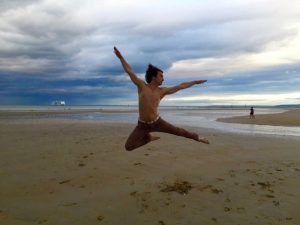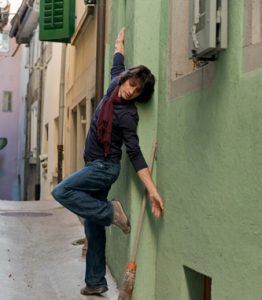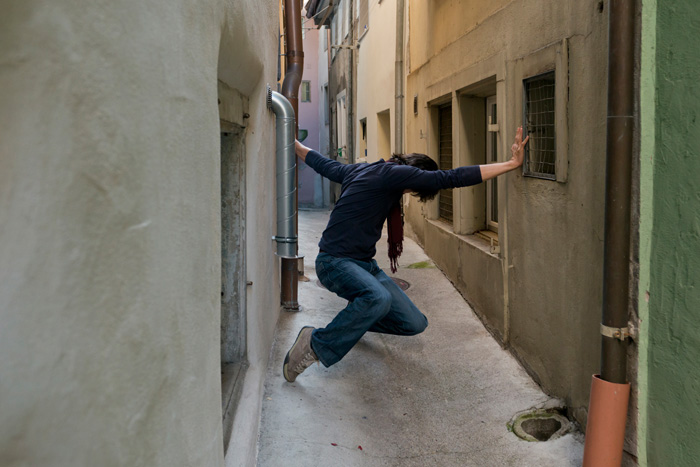3,252 Total views, 1 Views today
By Khanda Hameed & Nabaz Samad
In Kurdish culture, the body is largely ignored. Kurdish individuals are not aware of their bodies, though it is part and parcel of the human existence. This detachment from the body stems principally from the Islamic tradition. In Islam, the soul is more significant than the body because the soul is immortal and the body is temporal. In Islam, the body is in a confrontation with both the soul and mind at the same time. The soul is superior to the body because it is “pure” and “innocent”, whereas the body is deemed impure, guilty and sinful. It therefore must be punished. The soul is imprisoned in the body and it loses its purity. It is only after death that the soul is released from it and regains its purity. The body is also in battle with the mind. The body is treated as a slave, whereas the mind is a master. The Kurdish perception of the body likewise stems from Kurdish patriarchal and tribal traditions. In these traditions, the body is tied to women. Women are seen merely as bodies and, in turn, the female body is solely tied to sex and sexuality. Therefore, the body, and especially the female body, is subordinated to both the soul and men, respectively.
For Kurdish people, the physical body is not an important issue. Kurdish bodies are occupied, colonised, and disciplined by political powers and religious and patriarchal rules because these rules hold sway over the entirety of Kurdish society.
Karwan Omer is a Kurdish dancer and choreographer who denounces this understanding of the body as inferior to the mind and soul through his works. He wants to liberate Kurdish bodies through dance. Karwan encourages Kurdish people to be aware of their bodies and care for them. From Karwan’s art and dance, we understand the importance of the body’s role in human life since the body is neither inferior to the mind (mind/body dichotomy) nor to the soul (soul/body dichotomy in Islam). Humans manifest, express and identify themselves through their bodies. They are living within their bodies. Humans consist of both mind and body; thus, the body is an important part of human life and it is not subordinate to the mind. Mind and body are identical; they are not in a hierarchical position or in a master/slave relationship. The body is as equal as the mind and they shape the whole of human life together.

The body is performed as art, especially in dance – the body, particularly the head, and feet and hands have significant roles in dancing. When a dancer dances, she stands on her feet, which tie her to the earth, to roots, to a place she belongs. Her head from above links her to a distance, the sky and transcendence. The head carries the dancer far away, but it takes her feet to move, to seek and find new places. Hands in the middle are the centre for the head and feet. They are doers; they protect the dancer from falling down while also helping to bounce back should there be a failure. If we look from a dialectical perspective, the hands are a synthesis of the head (thesis) and feet (antithesis). If feet are standpoints and the head is a place for looking, thinking and producing ideas, then the hands will practice these ideas and notions.
Karwan Omer works in contemporary dance, which differs from the folk dance in terms of the significant role the individual plays. In contemporary dance, the body speaks, narrates and embodies thoughts and ideas. It means that thinking is within the body and is a process of movement. A dancer could perform individually and embody her ideas, narrate her stories through her body only. In contrast, the individuals’ role in the Kurdish folk dance is absent and the dancer has to dance in a group. Therefore, the collective sense constrains the whole dance. The Kurdish folk dance requires conformity. All dancers have to hold hands together and dance to the same rhythm and in the same fashion. As a result, Kurdish folk dance is a collective dance. The dancers cannot individually express themselves; they must follow the others. In Kurdish folk dance, every dancer must follow the first one who leads the whole dance performance.
Kurdish people are estranged from their bodies, but Karwan wants to reconcile them and make them familiar with their bodies again through dancing. As a contemporary dancer and choreographer, Karwan wants to give a significant role to individuals and their bodies; he gives free rein to them. The individuals perform their bodies, tell their stories, and discern and express their pains, emotions, feelings, and happiness through dancing. In addition, they manifest their differences and release themselves from the restraints that controlled and disciplined their bodies. The dancer is liberated in contemporary dance and expresses her inner feelings; she spreads out her thoughts and feelings from within.
Karwan tells his personal stories through dance. He also performs disasters, hardships, and the distress of Kurdish people – as we have seen in the ‘Pinadozakan’ (which means ‘the Cobblers’ in English), in which dance and play are combined. In this dance performance, the body tells stories; while the tongue was silenced, the body speaks. In the ‘Pinadozakan’, the body is completely liberated, the dancers in both genders are dancing together and their bodies are freely in contact.

In the ‘Outbreak’ dance performance, Karwan uses a brisk pace and a beautiful harmony between music and his moves to express the inner conflicts of humans in our time. Outbreak starts and ends with running, as though the dancer wants to run from himself or in search of his identity in the crisis of our time. In Outbreak, Karwan dances in foreground and background; in the former, he dances quickly and aggressively, whilst in the latter, he dances slowly and calmly. This explains the dualism of human beings who can be both aggressive and calm, violent and tolerant, bad and good at the same time. In Outbreak, when Karwan dances beside the column from both sides, he holds a dialogue of sorts through his dance. In Outbreak, head and hands have a more significant role than feet. The hands move around the head and face as though they want to protect the dancer from a disaster, obstacle or a problem. The background against which Karwan dances provides a wide area for the dancer to go in different directions and to every corner. He uses the space in its entirety. In this space, the dancer does not have a fixed place because standing in one place would mean being stuck in it. Humans sometimes tie themselves down to a specific place, but Karwan liberates himself and strives to find new places.
In dance, moving is thinking. Through movement of the head, hands, and feet, a dancer expresses emotions and ideas and a story emerges and narrates itself.
You can watch the video here https://vimeo.com/175944703

